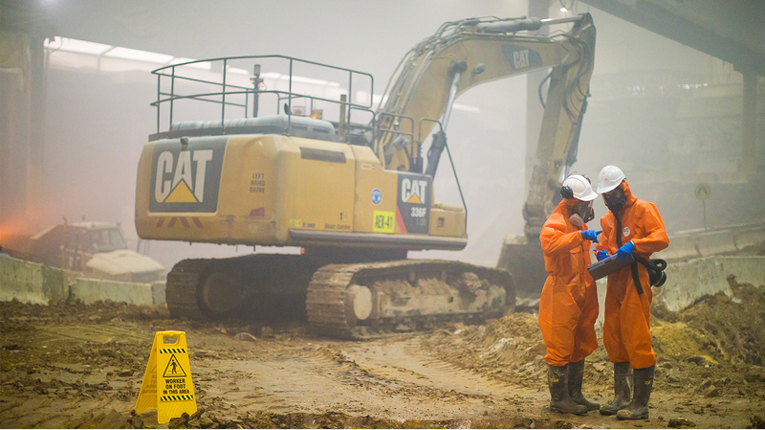Ventia's Environmental Services team recently completed one of the largest remediation projects in Australia at Barangaroo, on the water's edge in Sydney's CBD.
Innovative design was at the heart of this complex project, required to counter the challenges of the site's inner-city location — heavy vehicle and pedestrian traffic, residences and limited working hours — and the constraints of a small site footprint to work within.
The works have allowed for further development of the inner-city precinct, freeing up an additional 24,000m2 currently being transformed into a new waterfront area accommodating offices, retail and residential living.
Contracted to design, construct and manage the operations of the remediation works at the site, Ventia safely excavated, transported and disposed of over 450,000 tonnes of contaminated waste from the site.
With innovation as a core focus for the delivery team, a range of technologies were adopted:
- Computer modelling for design and planning
- Real-time machine guidance technology to excavate heavily contaminated areas, reducing the need for people to be exposed
- CCTV cameras for remote monitoring of progress, decreasing personnel exposure to contaminants and increasing safety
- GPS vehicle tracking to ensure every tonne of contaminated materal gets to its destination
- An online database and smartphone app to catpure the entire material tracking process.
Ventia also harnessed its in-house drone capabilities to collect extensive environmental data and further enhance safety through the use of a multi-purpose drone.

First-of-its-kind engineering technology
A hallmark of this project was the design, construction and dissassembly of one of the largest and most innovative odour control enclosures ever assembled in Australia. Using 'first-of-its-kind' engineering technology, the enclosures were removed by winching them along custom-engineered rails using a series of rollers, before they were demobilised in sections. This reduced the need for complex and high-risk lifting operations.
"Being innovative and leveraging the latest in technology improved safety, project productivity and overall service delivery," said Project Manager, Adam Fletcher "Our team was able to combine decades of experience, knowledge and technology gathered across numerous remediation projects to deliver this project safely, efficiently and effectively."
Work started in May 2017 and was completed in June 2019.
The project involved
- design, construction and operation of all remediation infrastructure
- odour control enclosures
- emission control systems
- water and soil treatment plants
- a specialist occupational health and hygiene team.
